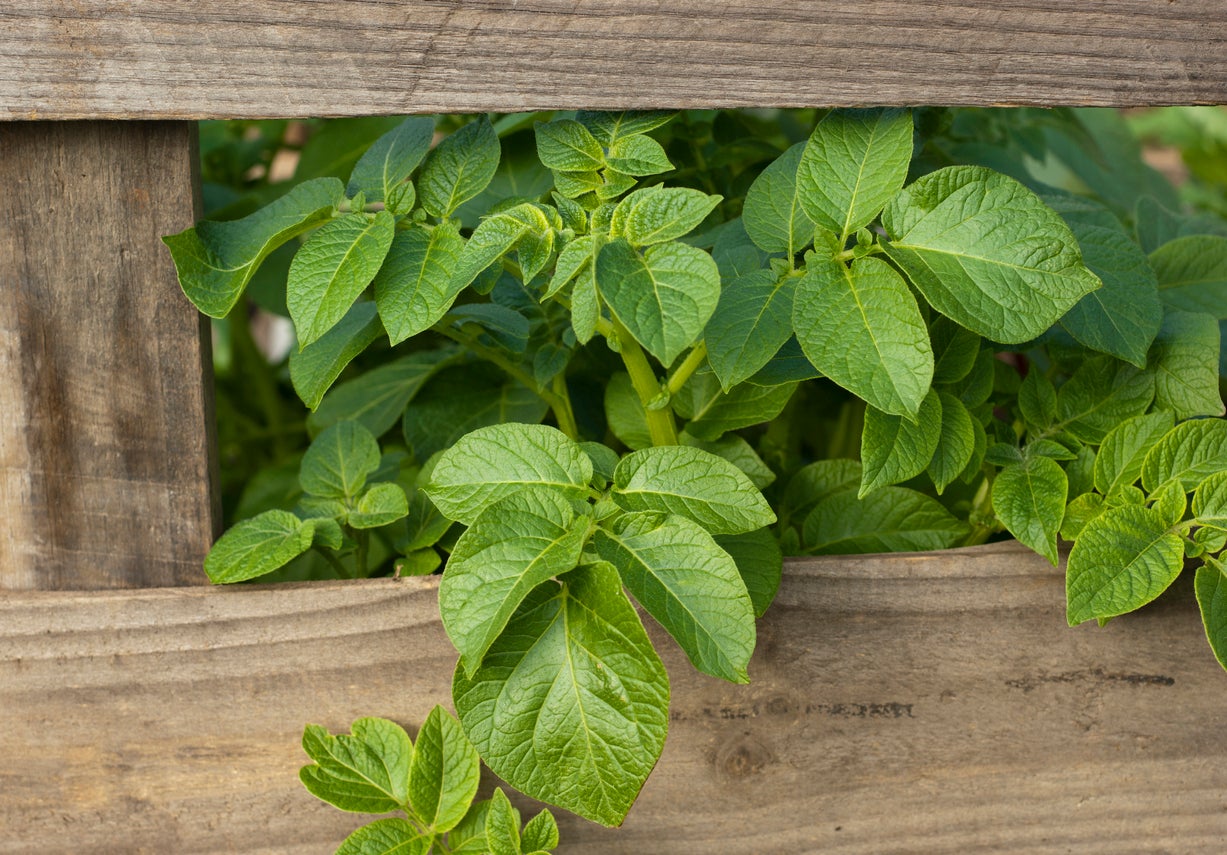Planting Potatoes In Pallets: How To Grow Potatoes With Pallets


Have you ever considered building a pallet potato box? Growing potatoes in a vertical garden can save space and increase yields. Building a pallet potato planter doesn't take any special skills and the materials can usually be acquired for free.
Is Planting Potatoes in Pallets Safe?
The shipping industry uses pallets to ship materials and products all over the world. To prevent the spread of pests from one country to another, both the U.S. and Canada require pallet manufacturers to treat pallets in a manner that would kill harmful insects living in the wood.
Heat-treated pallets are safe for building a pallet potato planter. Luckily, it's easy to find out if your pallets were heat treated. Simply locate the International Plant Protection Convention (IPPC) logo on the pallet. Heat-treated pallets will be marked (HT).
Avoid planting potatoes in pallets marked with (MB), as these older pallets were treated with methyl bromide, a highly toxic chemical. Additionally, check pallets for indications of chemical spills, like dark staining on wood, before building your pallet potato box. Growing edible plants in contaminated wood could make your produce unsafe to eat.
How to Grow Potatoes with Pallets
- Step 1: To build a pallet potato planter, you will need four pallets. Tie these together with wire or strong cord to fashion an open-ended box. (It'll be easier to plant if you leave one corner untied until you've set in your potatoes.)
- Step 2: Place the box in a sunny location on well-draining soil. Line the box with fabric weed barrier, cardboard, or several layers of newspaper to prevent weed growth.
- Step 3: Spread about 8 inches (20.5 cm.) of an organic-rich soil mix in the bottom of the pallet potato planter. Native soil mixed with compost at a 1:3 ratio will provide plenty of nutrients while maintaining sufficient moisture.
- Step 4: Cut potatoes into pieces, making sure each piece has at least two eyes. You can purchase seed potatoes from suppliers for pallet potato box growing, but any sprouted potatoes will work. When planting potatoes in pallets, taller-growing (late season) varieties produce larger yields compared to earlier, shorter varieties.
- Step 5: Gently push the cut-up potatoes into the soil about two inches (5 cm.) deep and space the pieces about 8 inches (20.5 cm.) apart. Finish covering the potatoes with another 2 inches (5 cm.) of the soil mix. If you previously left one corner of the pallet potato planter untied, it's time to secure it tightly.
- Step 6: Cover the soil with about 2 inches (5 cm.) of straw. Water the soil until moist. Continue keeping the soil moist, but not saturated, throughout the growing season.
- Step 7: As the potatoes grow, continue adding layers of soil topped with straw. Be sure to leave the top 2 to 4 inches (5 to 10 cm.) of vegetation exposed so the plants receive adequate sunlight for growth.
Harvest the potatoes once the foliage turns brown and dies back. The easiest method is to open the corner of the box and gently pull out the contents. Sort the potatoes from the dirt and straw mixture. Be sure to cure the potatoes before storing them for the winter.
Sign up for the Gardening Know How newsletter today and receive a free copy of our e-book "How to Grow Delicious Tomatoes".

Laura Miller has been gardening all her life. Holding a degree in Biology, Nutrition, and Agriculture, Laura's area of expertise is vegetables, herbs, and all things edible. She lives in Ohio.